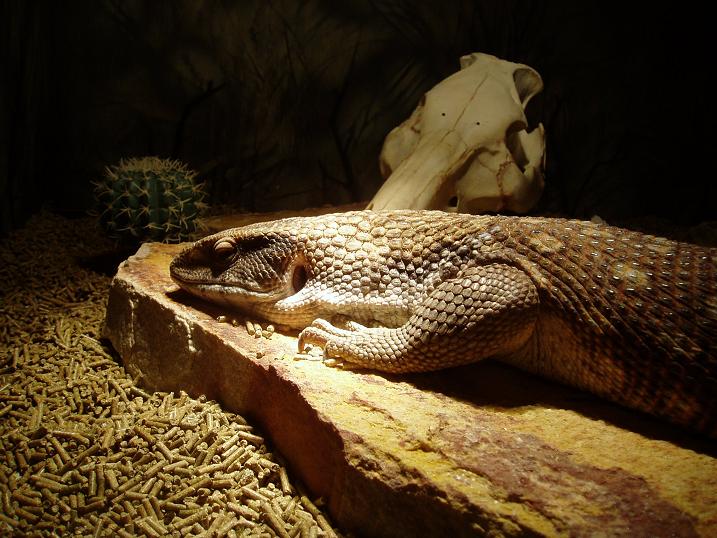|
| Query: varanidae | Result: 18th of 110 | |
Savannah Monitor (Varanus exanthematicus) - Wiki
| Subject: | Savannah Monitor (Varanus exanthematicus) - Wiki
| |

| Resolution: 717x538
File Size: 86584 Bytes
Date: 2004:11:26 18:02:54
Camera: u10D,S300D,u300D (OLYMPUS CORPORATION )
F number: f/3.1
Exposure: 1/100 sec
Focal Length: 580/100
Upload Date: 2007:09:20 19:53:48
|
Savannah monitor
From Wikipedia, the free encyclopedia
[Photo] "Notch" the Savannah Monitor (Varanus exanthematicus). Date: November 2004. Photo by Mark Mumme. Copyright (C) 2004 Mark Mumme
Permission is granted to copy, distribute and/or modify this document under the terms of the GNU Free Documentation License, Version 1.2 or any later version published by the Free Software Foundation; with no Invariant Sections, no Front-Cover Texts, and no Back-Cover Texts. A copy of the license is included in the section entitled "GNU Free Documentation License". |
The Savannah Monitor (Varanus exanthematicus) gets its Latin name from the unkeeled scales on the back of the neck which could be said to erupt, and its common name from the impression that it lives on the African savannah in the wild. The term savannah monitor is also used in reference to several other species of savannah-dwelling monitors.
Its earlier classification, "Bosc's Monitor," is often used to make this distinction. It is a robust creature, with powerful limbs for digging. Its diet is wide-ranging, including brachytrupes (a giant cricket), millipedes, centipedes, snails, scorpions, worms, insect larvae, small to medium birds, small reptiles, rodents and similar animals.
Its range extends from Senegal as far as Eritrea and northern Zaire. The majority of lizard skin used in the leather trade is derived from this species.
It is believed that Varanid species may possess a form of venom. Modified salivary glands produce proteins contained in venom in low concentration and its function is largely vestigial (Fry et al., 2006) The weak venom serves to prevent a bite wound from clotting,and makes bites from these species unusually painful. Unlike snakes, which utilize hollow fangs as delivery structures, monitor venom simply pools around the lizard's teeth and enters the bloodstream when the prey animal is bitten.
This species is readily available in the worldwide pet trade. These monitors are hardy and relatively easy to keep if given proper enclosure size, suitable soil depth, and high temperatures. They are not recommended for the beginner herpetoloculturist, due to their large size and space requirements. Also, once a larger size is reached, a savannah monitor can cause deep lacerations with its claws and tail.
The Bosc's Monitor is often confused with the Whitethroat Monitor (Varanus albigularis) which can grow to lengths of 5-6 feet. While similar in overall appearance, this species possesses significant morphological differences and is recognized as a separate species.
http://en.wikipedia.org/wiki/Savannah_monitor
| The text in this page is based on the copyrighted Wikipedia article shown in above URL. It is used under the GNU Free Documentation License. You may redistribute it, verbatim or modified, providing that you comply with the terms of the GFDL. |
|
^o^
Animal Pictures Archive for smart phones
^o^
|
|

